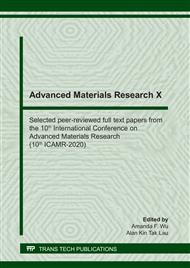p.41
p.46
p.51
p.56
p.63
p.68
p.73
p.81
p.87
Magneto-Transport Properties in LaMnO3 Thin Films on a-SiO2 Substrates Produced by Metal Organic Decomposition Method
Abstract:
We have studied the magneto-transport properties in LMO thin films on a-SiO2 substrates produced by the metal organic decomposition (MOD) method. LMO thin films have been prepared by the MOD method in the 100 % O2 gas atmosphere on different heat treatment conditions. Although LMO single crystal is an antiferromagnetic insulator, LMO thin films we have produced in the 100 % O2 gas atmosphere by use of the MOD method shows the ferromagnetic metal properties for suitable heat treatment conditions. We consider that the excess of O2- ions in LMO thin films produced in the 100 % O2 gas atmosphere induces the strong hole self-doping into those and changes to ferromagnetic metal. The quantity of excess O2- ions in LMO is sensitive to the heat treatment conditions of the LMO production, especially the temperature, time and atmosphere gas. We have obtained the coercive forces from the magnetic field dependence of magnetoresistance. Based on the temperature dependence of the coercive forces, we have estimated the Curie temperature of LMO thin films.
Info:
Periodical:
Pages:
63-67
Citation:
Online since:
July 2020
Authors:
Price:
Сopyright:
© 2020 Trans Tech Publications Ltd. All Rights Reserved
Share:
Citation:


